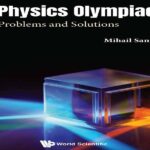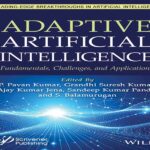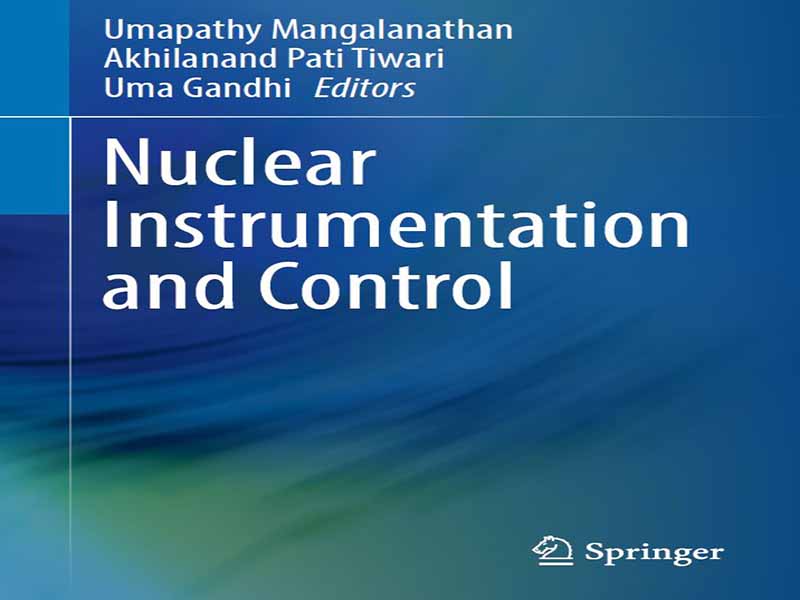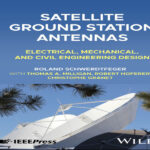- عنوان کتاب: Nuclear Instrumentation and Control
- نویسنده: Umapathy Mangalanathan
- حوزه: هستهای
- سال انتشار: 2025
- تعداد صفحه: 320
- زبان اصلی: انگلیسی
- نوع فایل: pdf
- حجم فایل: 5.64 مگابایت
راکتورهای هستهای انرژی آزاد شده در شکافت هستهای هستههای سنگین مانند هستههای اورانیوم و پلوتونیوم را مهار میکنند. تعدادی از راکتورهای هستهای با طرحها، اندازههای فیزیکی و ظرفیتهای مختلف در جهان فعال هستند و انرژی هستهای را برای تولید برق در نیروگاه هستهای (NPP) تولید میکنند، در حالی که بسیاری دیگر برای تحقیقات هستهای و تولید ایزوتوپها برای کاربردهای متعدد، به عنوان مثال، برای تشخیص و درمان پزشکی، کشاورزی و نگهداری مواد غذایی، و غیره استفاده میشوند. عملکرد اولین راکتور هستهای در اوایل دهه 1940 نشان داده شد و اولین نیروگاه هستهای تجاری در دهه 1950 شروع به کار کرد. دانش در زمینه علوم و مهندسی هستهای از آن زمان تاکنون رشد کرده است. این تکنگاری مجموعهای از دانش پیشرفته است که از طریق تحقیقات و تجربیات اخیر در مدلسازی ریاضی، طراحی ابزار دقیق و کنترل و عملکرد راکتورهای هستهای در هند به دست آمده است. با این حال، برخی از اصول اولیه نیز با هدف مستقل کردن کتاب گنجانده شده است. در این کتاب، ۱۱ فصل وجود دارد که شامل پایش تابش، آشکارسازهای نوترونی، ابزار دقیق راکتور حرارتی و سریع، آشکارسازهای گاما برای توصیف و تصویربرداری مواد، سینتیک و کنترل راکتور هستهای میشود. سیستمهای پایش تابش نقش مهمی در حفاظت از سلامت انسان، حفاظت از محیط زیست، تضمین رعایت مقررات، افزایش آمادگی در مواقع اضطراری، پشتیبانی از کاربردهای پزشکی، تقویت امنیت هستهای، تسهیل تحقیقات و ارتقای آگاهی و آموزش عمومی در مورد خطرات تابش و اقدامات ایمنی دارند. این سیستمها با پایش مداوم سطح تابش و ارزیابی خطرات احتمالی، به استفاده ایمن و مسئولانه از تابش یونیزان در کاربردها و صنایع مختلف کمک میکنند. بررسی جامع سیستمهای پایش تابش در نیروگاههای هستهای که شامل مکانهای پایش، انواع پایش و سیستمهای پایش پس از حادثه است، در این مونوگراف ارائه شده است. اندازهگیریها در تأسیسات هستهای برای اطمینان از عملکرد ایمن، کارآمد و قابل اعتماد از اهمیت بالایی برخوردارند، زیرا اطلاعات ضروری را برای پایش شرایط راکتور، کنترل تولید برق و حفظ سیستمهای ایمنی ارائه میدهند. تعدادی از پارامترهایی که برای کنترل و ایمنی یک راکتور مهم هستند، شامل شار نوترون، دمای ورودی و خروجی خنککننده اولیه، دمای کانال خنککننده، دمای کندکننده، دمای سطح سوخت، فشار سیستم اولیه، فشار بخار، سرعت جریان خنککننده اولیه، جریان بخار، جریان آب تغذیه، کنترل، موقعیت میله جاذب و غیره میشود. در میان این پارامترها، شار نوترون مهمترین سیگنال در عملکرد راکتور است. نیاز به اندازهگیری شار نوترون، اصول و انواع آشکارسازهای نوترون و پردازش سیگنال و ابزار دقیق مرتبط با آن، منحصراً در این رساله ارائه شده است. از بدو پیدایش انرژی هستهای، نقش راکتور سریع خنکشده با سدیم (SFR) و چرخه سوخت آن برای پایداری بلندمدت انرژی هستهای شناخته شده است. فناوری SFR معیارهای بزرگی از ایمنی راکتور، راندمان حرارتی بالا و نسبت بالای تولید سوخت را فراهم میکند. این امر منجر به استفاده بهتر از سوخت و در نتیجه اقتصاد بهتر در تولید برق میشود. فصلی در این رساله به تکنیکهای مختلف اندازهگیری مخصوص SFR میپردازد. همچنین دستورالعملهایی برای طراحی و استقرار سیستمهای ابزار دقیق و کنترل ایمنی برای SFR ارائه میدهد. تابشها به طور گسترده برای توصیف مواد پیشرفته، تشخیص پزشکی و درمانهای پزشکی تخصصی استفاده میشوند. دو فصل از این کتاب، نگاهی کلی به پیشرفتها و کاربردهای پرتوهای گاما برای مطالعات مختلف توصیف مواد پیشرفته و همچنین برای مطالعات مسائل بیولوژیکی ارائه میدهد. آشکارسازهای سوسوزن بر اساس اصل تولید نور مرئی به دلیل برهمکنش تابش در حجم فعال آشکارساز و به دنبال آن آشکارسازی نور توسط یک حسگر نوری کار میکنند. آشکارسازهای سوسوزن معدنی، به ویژه، به خوبی شناخته شدهاند که پرتوهای گاما را با راندمان بهتر و وضوح نسبتاً خوبی آشکارسازی میکنند. فصلی از این کتاب به بررسی چند تکنیک اندازهگیری برای مطالعه وضوح انرژی و راندمان آشکارسازهای سوسوزن معدنی برای پرتوهای گاما میپردازد. مدلسازی ریاضی گامی مهم در مطالعه سیستمهای فیزیکی است. با این انگیزه، مدل سینتیک نقطهای راکتورهای هستهای و نمایش آن در فرم استاندارد فضای حالت که برای تجزیه و تحلیل و طراحی کنترل مناسب است، در این مونوگراف ارائه شده است. علاوه بر این، رفتار راکتور با مدلهای غیرخطی و خطی مورد مطالعه قرار گرفته است. از تکنیکهای فاصلهای در طراحی کنترلکننده مقاوم برای راکتورها تحت عدم قطعیت در پارامترهای مدلسازی و اندازهگیری استفاده شده است. طراحی کنترلکننده مبتنی بر فاصله برای هر دو راکتور آب سنگین تحت فشار و آب تحت فشار ارائه شده است. مطالعات اخیر
Nuclear reactors harness the energy released in nuclear fission of heavy nuclei such as the uranium and plutonium nuclei. A number of nuclear reactors of different designs, physical sizes, and capacities are operational in the world, generating nuclear energy for electrical power production in a nuclear power plant (NPP), while many others are used for nuclear research and production of isotopes for numerous applications, e.g., for medical diagnosis and therapy, agriculture, and food preservation, to name a few. The operation of the first nuclear reactor was demonstrated in the early 1940s, and the first commercial nuclear power station started operating in 1950s. The knowledge in the field of nuclear science and engineering has grown ever since. This monograph is a compilation of the advanced knowledge contributed through recent research and experience in mathematical modeling, instrumentation and control design, and operation of nuclear reactors in India. However, some fundamentals have also been included with the intent to make the book self-contained. In it, there are 11 chapters covering radiation monitoring, neutron detectors, thermal and fast reactor instrumentation, gamma detectors for material characterization and imaging, nuclear reactor kinetics and control. Radiation monitoring systems play a critical role in protecting human health, safeguarding the environment, ensuring regulatory compliance, enhancing emergency preparedness, supporting medical applications, strengthening nuclear security, facilitating research, and advancing public awareness and education about radiation risks and safety measures. By continuously monitoring radiation levels and assessing potential risks, these systems contribute to the safe and responsible use of ionizing radiation in various applications and industries. A comprehensive exploration of radiation monitoring systems in NPPs which includes monitoring locations, types of monitoring, and post-accident monitoring systems, is presented in the monograph. Measurements in nuclear facilities are of utmost importance for ensuring safe, efficient, and reliable operation as they provide essential information for monitoring reactor conditions, controlling power generation, and maintaining safety systems. Number of parameters that are important for the control and safety of a reactor, include neutron flux, primary coolant inlet and outlet temperatures, coolant channel temperature, moderator temperature, fuel surface temperature, primary system pressure, steam pressure, primary coolant flow rate, steam flow, feed water flow, control, absorber rod position, etc. Among these parameters, the neutron flux is the most important signal in operating the reactor. The need of measuring neutron flux, principles, and types of neutron detectors and its associated signal processing and instrumentation are exclusively brought out in this monograph. From the inception of nuclear energy, role of the sodium cooled fast reactor (SFR) and its fuel cycle has been recognized for long-term sustainability of nuclear power. SFR technology provides large measures of reactor safety, large thermal efficiency, and high fuel breeding ratio. This leads to better fuel utilization and therefore better economics in power production. A chapter in this monograph deals with various measurement techniques specific to SFR. It also presents the guidelines for designing and deploying safety instrumentation and control systems for SFR. Radiations are extensively used for advanced materials characterization, medical diagnosis, and specialized medical treatments. Two chapters in this book, provide an overall view of the developments and applications of gamma rays for different advanced materials’ characterization studies and also for the studies of biological problems. Scintillation detectors work on the principle of production of visible light due to the interaction of radiation within the active volume of the detector followed by the detection of the light by a photosensor. Inorganic scintillation detectors, in particular, are well known to detect gamma rays with better efficiency and reasonably good resolution. A chapter in this book deliberates upon a few measurement techniques to study the energy resolution and detection efficiency of inorganic scintillation detectors for gamma rays. Mathematical modeling is an important step in study of physical systems. With this motivation, the point kinetics model of nuclear reactors and its representation in the standard state-space form which is suitable for control analysis and design is presented in this monograph. Further, the reactor behavior has been studied with the nonlinear and linearized models. Interval techniques have been used in designing robust controller for the reactors under uncertainties in modeling and measurement parameters. Interval-based controller design for both the pressurized heavy water and the pressurized water reactors are presented. The recent developments in robotic systems have attracted significant interest in both new and legacy builds in nuclear applications. The control of robots in complex hazardous nuclear environments needs to be developed to overcome its many challenges. A chapter in this book focusses on safety-related control systems involving robots in the nuclear sector. While writing the chapters, the language has been kept simple and disposition sufficiently detailed so as to be able to disseminate the knowledge effectively to a student not having exposure to specialized knowledge in nuclear science and engineering. As a result, it is expected to be useful to a wide class of learners— undergraduate and graduate students as well as the practicing nuclear engineers and scientists.
این کتاب را میتوانید از لینک زیر بصورت رایگان دانلود کنید:
Download: Nuclear Instrumentation and Control




































نظرات کاربران